|
三個年代
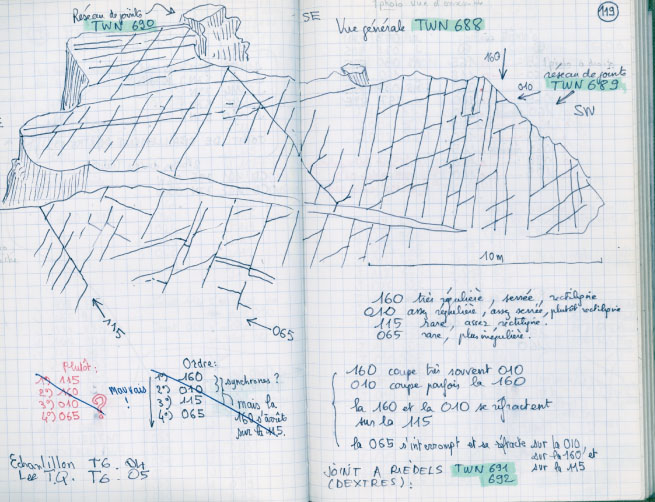
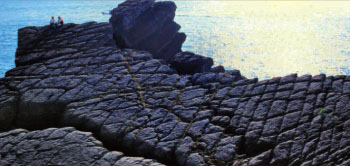
新竹叉尖山(1986作)台灣東北角的海岸有岩岸、有沙灘,其秀麗又富有奇性異狀的岩岸,更吸引了安教授。安教授於1982、86、87分別造訪了東北角海岸,特別對有豆腐岩之稱的地形構造,做了詳細的分析研究。從他的野外素描中,可以看到地質學家眼中的豆腐岩,是由三、四組有系統方向的節理分割岩石所構成的。 Rock Jointed, Peikuan (1986)The coastline of northeastern Taiwan boasts plenty of splendid landforms such as beaches, wave-cut platforms, coves, headlands, and lagoons. Perhaps the various exotic shapes of the rocky shore had always posed great attraction for the Professor Angelier. In 1982, 86 and 87 he paid several visits to the northeastern coastal Taiwan and made detailed analysis of the so called "Bean Curd rock mass" landform, which can be seen from his field sketches to consist of three-to-four systematic cross cutting joint sets.
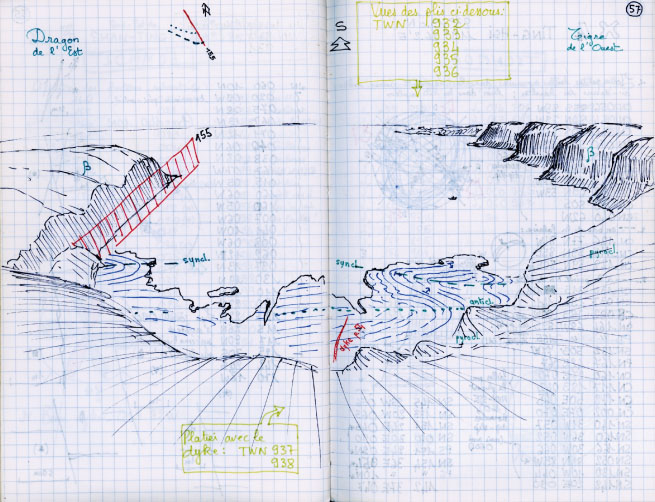
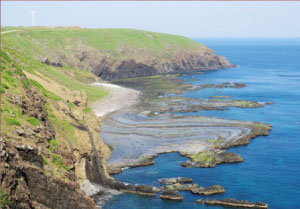
龍埕海蝕平台,澎湖七美(1987繪)1987年,安教授來到了澎湖,進行約一星期的野外地質工作。澎湖群島在台灣海峽中遠離台灣本島,在地體構造架構中屬於南海擴張海盆的北緣;它的主要地質特性是由玄武岩質岩漿噴發而形成的島嶼。安教授的工作,發現並驗證了澎湖群島除了受到板塊碰撞擠壓輕微的影響外,確實在更早期玄武岩噴發形成時,曾伴隨了兩期的地殼擴張作用。這個結果,隨後於1990年在國際學術期刊上發表,為澎湖地區的地體構造演化定了調。此外,安教授也發現了澎湖之美,特別在七美島的大獅風景區,留下了這麼一個俯望龍埕海蝕平台及海灣的地質風景素描。 Longcheng Bay, Chimei, Penghu (1987)In 1987, Professor Angelier arrived in Penghu Islands for approximately one week of geological survey. The Penghu Islands are situated in Taiwan Strait, isolated from the main island of Taiwan. Within the plate tectonic framework, they belong to the northern extremity of the extended South Chinese Sea basin. The principal geological characteristic of the Penghu Islands is that they are composed of extrusive flooded basalt of Miocene time. The research of the Professor Angelier has not only verified that they had been affected by minor tectonic collision but also had experienced two episodes of crustal extension at an earlier stage, when they accompanied the eruption of the basalt. Such findings, now coined the tectonic evolution of Penghu Islands, were subsequently published in an international journal. As an added note, Professor Angelier, touched by the scenic beauty of the Penghu Islands, finally left us with a wonderful geological sketch that overlooks the sea-cut platform of the Longcheng bay, Chimei, Penghu.
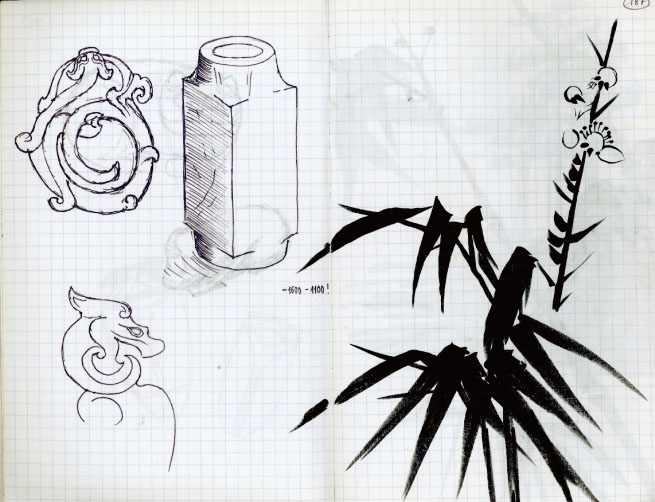
故宮文物 (1986繪)故宮對於安教授,有一種特別的魔力及吸引力。在來台地質工作三十年的旅程中,故宮幾乎是每年野外地質工作之餘,最後一定要造訪的地方。有幾次看到高興了,還會提筆在隨身攜帶的野外筆記本中作畫,將喜歡的故宮文物即時素描,也試著學學中國繪畫的筆法。可以感受到他比許多華人更喜愛中國的歷史文化。 Object and Bamboo, National Palace Museum (1986)The National Palace Museum always has a special attraction to Professor Angelier, as during his thirty years of field trips to Taiwan, he seized every opportunity to pay a visit whenever he had spare time. The ancient Chinese artifacts and artworks of the National Palace Museum must have a special meaning to him. On several occasions he was so overwhelmed by the museum display showcase that he made impromptu sketches in his ever-present field notebook. He has tried to use the Chinese style of painting to do his sketches. We can feel that his passion for Chinese ancient artifacts and artworks is greater than many Chinese. |


